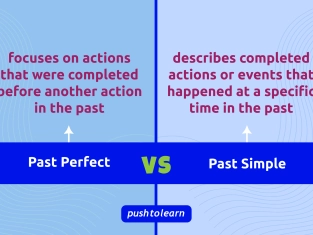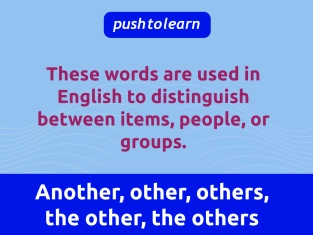by PushtoLearn
Futuro continuo vs. futuro perfecto en inglés
Tabla de contenidos
Futuro perfecto – Ejercicios
Estos ejercicios se enfocan en el futuro perfecto.
¿Qué son los tiempos futuro continuo y futuro perfecto?
Futuro continuo
El futuro continuo se utiliza para hablar de una acción que estará en curso en un momento específico del futuro.
Estructura:
Sujeto + will + be + verbo(-ing)
Ejemplos:
-
At 8 p.m. tomorrow, I will be watching a movie.
-
This time next week, they will be traveling to New York.
Futuro perfecto
El futuro perfecto se utiliza para hablar de una acción que se habrá completado antes de un momento específico en el futuro.
Estructura:
Sujeto + will + have + participio pasado
Ejemplos:
-
By 10 a.m., she will have finished her homework.
-
They will have built the new bridge by next year.

Reglas y diferencias clave
|
Característica |
Futuro continuo |
Futuro perfecto |
|
Enfoque |
Acción en curso en un momento específico del futuro |
Acción completada antes de un momento específico |
|
Expresiones de tiempo |
"at this time tomorrow", "at 9 p.m.", etc. |
"by 10 a.m.", "before Friday", "by next month" |
|
Forma |
Will + be + verbo(-ing) |
Will + have + participio pasado |
|
Ejemplo |
I will be working at 7 p.m. tonight. |
I will have finished my work by 7 p.m. tonight. |
Errores comunes
Errores con el futuro continuo
-
Uso incorrecto de la forma verbal:
-
Incorrecto: She will be works tomorrow.
-
Correcto: She will be working tomorrow.
-
Confusión con el presente continuo:
-
Incorrecto: I am going to the park at 5 p.m. (si se habla de una acción futura planificada).
-
Correcto: I will be going to the park at 5 p.m. (acción futura en curso).
Errores con el futuro perfecto
-
Uso del verbo auxiliar incorrecto:
-
Incorrecto: They will had finished by then.
-
Correcto: They will have finished by then.
-
Olvidar la forma del participio pasado:
-
Incorrecto: We will have complete the project.
-
Correcto: We will have completed the project.
Cuándo usar estos tiempos en la vida cotidiana
Futuro continuo
-
Acciones en curso en el futuro:
-
At 6 p.m., I will be driving home from work.
-
Preguntas corteses sobre planes futuros:
-
Will you be joining us for dinner later?
Futuro perfecto
-
Hablar sobre fechas límite u objetivos:
-
By next week, I will have learned 50 new words.
-
Especular sobre acciones completadas en el futuro:
-
The guests will have left by the time you arrive.
FAQs sobre el futuro continuo y el futuro perfecto
¿Cuál es la diferencia principal entre el futuro continuo y el futuro perfecto?
El futuro continuo describe acciones en curso en un momento específico del futuro, mientras que el futuro perfectodescribe acciones que se habrán completado antes de un momento específico en el futuro.
¿Puedo usar el futuro continuo con "by"?
No. El futuro continuo se usa con frases como "at this time" o "at 5 p.m."
El futuro perfecto se usa con "by" o "before".
¿Existen formas alternativas para estos tiempos?
Sí. Se puede usar "going to" en lugar de "will" en contextos informales. Por ejemplo:
Futuro continuo: At 7 p.m., I am going to be studying.
Futuro perfecto: By tomorrow, I am going to have completed my project.
¿Cómo se forman las oraciones negativas con estos tiempos?
Futuro continuo: se agrega "not" después de "will".
Ejemplo: She will not be attending the meeting.
Futuro perfecto: se agrega "not" después de "will".
Ejemplo: They will not have arrived by 8 p.m.
¿Cuáles son los marcadores de tiempo comunes para estos tiempos?
Futuro continuo: "At this time tomorrow", "At 5 p.m.", "While..."
Futuro perfecto: "By 10 a.m.", "Before the weekend", "By the time..."

